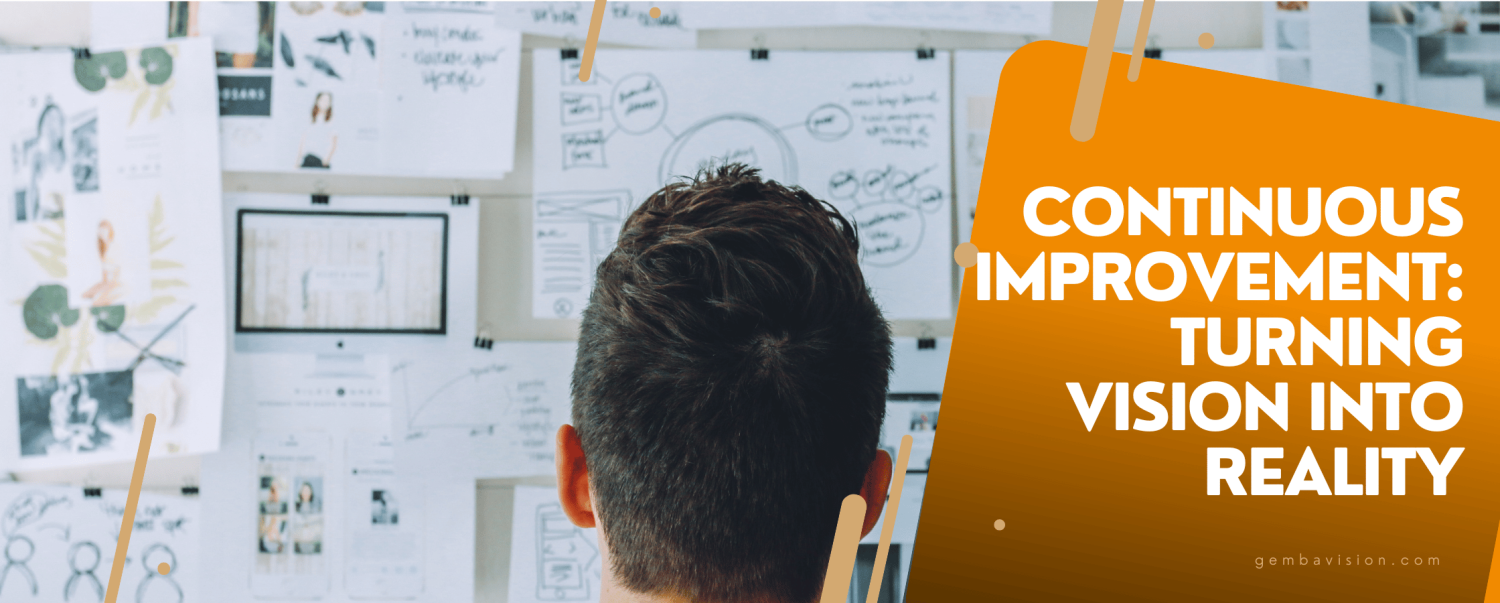21st Mar 2024
Continuous Improvement in Action: Turning Vision into Reality
Continuous improvement is more than just a concept; it’s a dynamic philosophy that organisations embrace to enhance safety, efficiency, quality, and overall performance. When put into action, continuous improvement becomes a catalyst for positive change. Let’s explore how this transformative approach unfolds in the real world:
1. Cultivating a Culture of Innovation:
At the heart of improvement is a culture that encourages both incremental continuous improvements and innovation. Organisations foster an environment where employees feel empowered and able to suggest and implement improvements in processes, products, and services. Think of innovations as the step changes.
2. Continuous improvement as a Guiding Principle:
Continuous improvement serves as a guiding principle. It emphasises the incremental and continuous enhancement of processes. Small, manageable changes are prioritised, leading to a cumulative positive impact over time.
3. Data-Driven Decision-Making:
Continuous improvement relies on data to inform decisions. Organisations collect and analyse relevant data to identify trends, patterns, and areas for improvement. This data-driven approach ensures that changes are based on facts rather than intuition.
4. Regular Performance Reviews:
Implementing continuous improvement involves regularly reviewing organisational performance. This includes assessing a limited number of key performance indicators, customer feedback, and employee engagement. These reviews serve as a foundation for identifying areas that require attention and refinement.
5. Employee Engagement and Empowerment:
Engaged employees are the driving force behind successful continuous improvement initiatives. Organisations empower colleagues by involving them in decision-making processes, encouraging feedback, and providing opportunities for professional development.
6. Implementing Lean Methodologies:
Lean methodologies, derived from the principles of continuous improvement, focus on eliminating waste, optimising processes, and enhancing efficiency. Organisations adopting lean practices streamline workflows, reduce costs, and improve overall productivity.
7. Gemba Walks for Hands-On Insight:
Gemba walks, where leaders observe work processes firsthand, provide invaluable insights. By being present at the point of action, leaders can identify opportunities for improvement, address challenges, and demonstrate a commitment to understanding the daily operations of the organisation.
8. Adapt to Change:
Continuous improvement thrives on adaptability. Organisations that maintain a flexible mindset can respond swiftly to changing circumstances. This flexibility allows for the seamless integration of improvements and adjustments as needed.
9. Customer-Centric Focus:
Successful continuous improvement aligns with the needs and expectations of customers. Organisations prioritise understanding customer feedback, preferences, and pain points, using this information to tailor products and services for an enhanced customer experience.
10. Celebrating Success and Learning from Failure:
Acknowledging and celebrating successes, no matter how small, reinforces a culture of continuous improvement. Equally important is learning from failures. Organisations view failures as opportunities to iterate, refine, and ultimately grow.
In conclusion, continuous improvement is a living philosophy that transforms organisations from within. Organisations can achieve sustained success by fostering a culture of innovation, leveraging data, and empowering employees. Continuous improvement is not a destination; it’s how we progress forward, and when embraced wholeheartedly, it propels organisations toward excellence, adaptability, and a brighter future.

